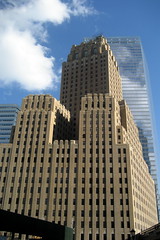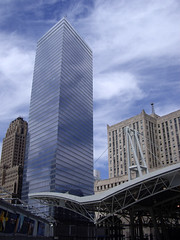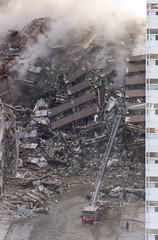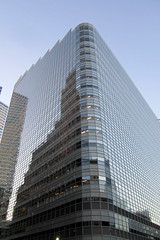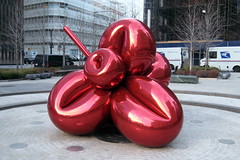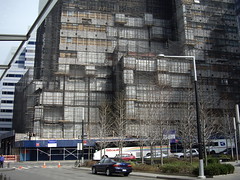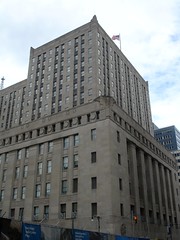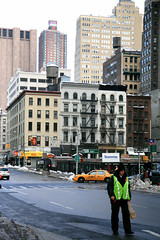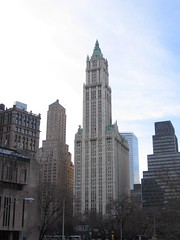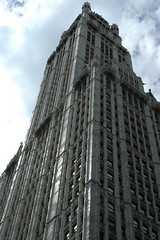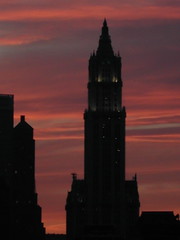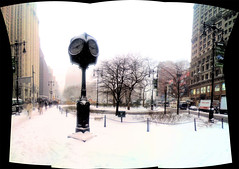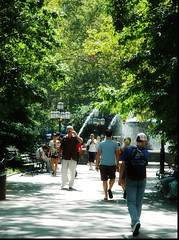South:
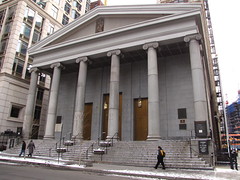
22 (corner): This is the site of the
oldest Catholic church in New York State,
built here in 1785 on a site that was then outside of town--away from anti-Catholic mobs. Protesters still surrounded the church on December 24, 1806, outraged that parishoners were celebrating the "popish superstition" of Christmas.

In 1805, Elizabeth Ann Seton converted here to the religion that would make her its first U.S.-born saint. Pierre Toussaint, a black Haitian born into slavery who became a wealthy philanthropist in New York City, also worshipped here.
After the original church was destroyed by the Great Fire of 1835, this replacement,
designed by John R. Haggerty and Thomas Thomas in the Greek Revival style, was completed in 1835.
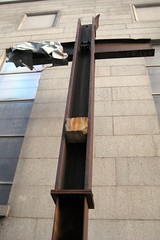
It was hit by the landing gear of one of the planes involved in the September 11 attacks; FDNY chaplain Father Mychal Judge was laid out in front of the altar here after his death. The World Trade Center Cross was displayed here from 2006-11 before being moved to the site of the National September 11 Memorial.
6: Naturally Delicious, catering; Continental Shoe Repair
Corner (225 Broadway): The
Transportation Building,
a 1927 York & Sawyer building
where several major railroads used to have
offices. This was also for a time the home
of the
Pace Institute (now Pace University).
Block: This block used to be spanned by
the Park Hotel--better known as the Astor House Hotel--
an ultra-fashionable hotel built in 1834 by John Jacob
Astor. (Astor had previously lived on the site, in
the house of
Rufus King, one of New York's two original
senators.) Its guests included Abraham Lincoln,
Andrew Jackson, James Polk, Davy Crockett, Daniel Webster, Henry Clay,
Sam Houston, Jefferson Davis, Charles Dickens, Nathaniel Hawthorne
and
Jenny Lind.
The psychologist
William James was born in the hotel
on January 11, 1842. Inventor Nikola Tesla lived there
from 1889-92.
The hotel was torn down in 1914.
| 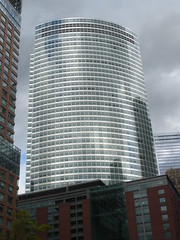
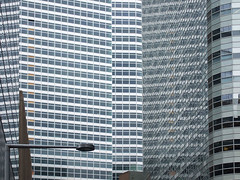 secretaries, a White House chief of staff, a New York Fed chief, an Italian prime minister, a New Jersey governor.... The list goes on.
secretaries, a White House chief of staff, a New York Fed chief, an Italian prime minister, a New Jersey governor.... The list goes on.
